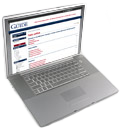Managing Overgrowth

Tree limbs and power lines don’t mix. That was the final verdict after overgrown trees caused blackouts immobilizing major swaths of the East Coast in 2003. (See Federal Energy Regulatory Commission (FERC), “Utility Vegetation Management (UVM): Final Report,” March 2004.)
The Federal Energy Regulatory Commission (FERC) responded by enforcing stricter clearance guidelines with hefty fines -- up to $1 million per day -- for vegetation-induced outages. The action underscores the importance of reliable transmission for the thousands of U.S. utility companies that deliver electricity to more than 131 million customers over 157,000 miles of high-voltage electric transmission lines. (See United States Environmental Protection Agency (EPA), “Benefits of Integrated Vegetation Management on Rights-of-Way,” October 2008.)
Rather than view FERC’s increased scrutiny as a threat, many utilities see the new regulations as an opportunity.
Rather than view the increased scrutiny as a threat, many utilities see the new regulations as an opportunity to invest in integrated vegetation management (IVM) programs that ensure safe, reliable power transmission and also enhance the valuable natural habitats found in rights of way.
According to the North American Electric Reliability Corporation (NERC), the organization designated by FERC to develop transmission reliability standards, IVM provides practitioners with what industry experts consider to be the most appropriate techniques to apply to electric rights of way projects in order to exceed vegetation control requirements.
NERC doesn’t specify which tactics should be included in an IVM plan, but allows utilities to implement the biological, chemical, mechanical, manual and cultural controls that best suit a site’s brush-control needs, climate, location, habitat and wildlife. The result is a program uniquely suited to the right of way. With the right strategic planning, an IVM plan also can save labor and reduce operating costs.
Streamlining Maintenance
According to the Environmental Protection Agency (EPA), vegetation management often represents a utility company’s largest operations and maintenance cost, so it makes sense to incorporate practices that promote self-sustaining habitats that require less mowing, cutting and spray treatments.
With strategic planning, an integrated vegetation management plan can save labor and reduce operating costs. Richard Johnstone, president of IVM Partners and principal of VMES LLC, is an independent consultant who helps utility companies and federal agencies develop IVM programs using best practices that accommodate diverse landscapes. To gauge IVM efficiency, Johnstone conducted research on a distribution right of way adjacent to a forest. According to his calculations, the initial cleanup cost the utility approximately $300 per span. “But after the initial cutting and herbicide treatments,” he says, “we were able to send backpack crews in for selective touch ups for just $10 per span.”
While a multifaceted IVM program is not without startup costs, in the long-term, says Johnstone, an effective program that releases native prairie grasses, wildflowers and low-growing shrubs, which out-compete taller-growing species, can reduce labor, herbicide use and equipment costs. The key, he says, is diligence. A utility can save time, money and resources by finding ways to gain control over brush, but must have a maintenance plan in place that prevents the area from returning to overgrowth and requiring costly control measures all over again.
When herbicide treatments are required, utilities can gain efficiencies by choosing federally nonrestricted herbicides that have low use rates. Nonrestricted products give applicators greater flexibility to treat where application will be most beneficial. And low-use-rate products require less storage, hauling, measuring and mixing, which reduces chance for error and allows applicators to prepare and apply tank mixes more quickly and confidently. These products not only enhance applicator productivity, but also can create less waste and offer favorable environmental profiles, which are better received by the public.
Working in the Public Eye
Implementing environmental changes must be done carefully, since stakeholders use rights of way for different purposes. Those may include landowners who use the land for recreation or gardening, federal agencies working to protect natural habitats, and citizens who enjoy woody vistas along roadsides and nature trails.
Often, multiple needs are synergistic. The utility can meet safety and reliability requirements while maintaining or enhancing aesthetics and environmental diversity within the right of way. Johnstone cites his work with a large mid-Atlantic utility company as a prime example of an IVM program that meets the company’s transmission needs, while providing environmental benefits along the right of way and gaining the trust and approval of the communities it serves. This right of way had been maintained for years by mowing alone, which met clearance needs, but allowed invasive species to crowd out native prairie grasses. Because the right of way travels through a residential community, transitioning it to an IVM program that incorporates strategic herbicide use required much planning, research and communication. But that perseverance paid off. “Today, the right of way hosts a variety of thriving ecosystems, from native prairies to lush wetlands, and has won the favor of the community,” said Johnstone.
The utility’s forestry manager adds that effective internal communication is just as vital to a program’s success. “Change management is a constant that most corporations deal with. You need to help people understand the new model, embrace its benefits and move forward. That requires educating staff and contractor partners, then giving them the best tools to execute the program successfully.”
Enriching the Environment
The mid-Atlantic right of way restoration is an example of how IVM programs manage the land to enhance its natural vitality. The operative word, says Johnstone, is “manage,” not “maintain.”
“Mowing alone will maintain an existing situation, but will never rid a right of way of noxious weeds and invasive species.” To manage, he said, is to change the right of way to become self-sustainable. “Effective herbicides are what help us implement IVM techniques. As technologies continue to evolve, we have better tools to accomplish our goals.”
Selective herbicides allow a utility to take advantage of natural succession by efficiently targeting brush species, while promoting a healthy grass understory. When you take out the invasive species that compete for water, sunlight and nutrients, desirable dormant species will return, providing valuable habitat for wildlife and pollinators and creating an aesthetically pleasing landscape.
When you take out the invasive species that compete for water, sunlight and nutrients, desirable dormant species will return.
Investing in an IVM program pays dividends not just to the environment, but also to a utility’s bottom line. Over time, as the right of way becomes a self-sustaining landscape, less maintenance is required, reducing labor and equipment costs while ensuring safe, reliable power distribution.
For more information on NERC standards, visit nerc.com to download a copy of the FAC-003-2 Technical Reference. Detailed information on developing and implementing an IVM program can be found in the American National Standards Institute (ANSI) A300 Standards for Tree Care Operations, available at tca.org.
About the Author:
Darin Sloan is a portfolio manager for DuPont Land Management, where he oversees development of new herbicide products designed for vegetation management professionals. He holds a B.S. degree in mechanical engineering from Mississippi State University and a M.S. degree in industrial administration from Purdue University. For more information on industrial brush management, please visit landmanagement.dupont.com




